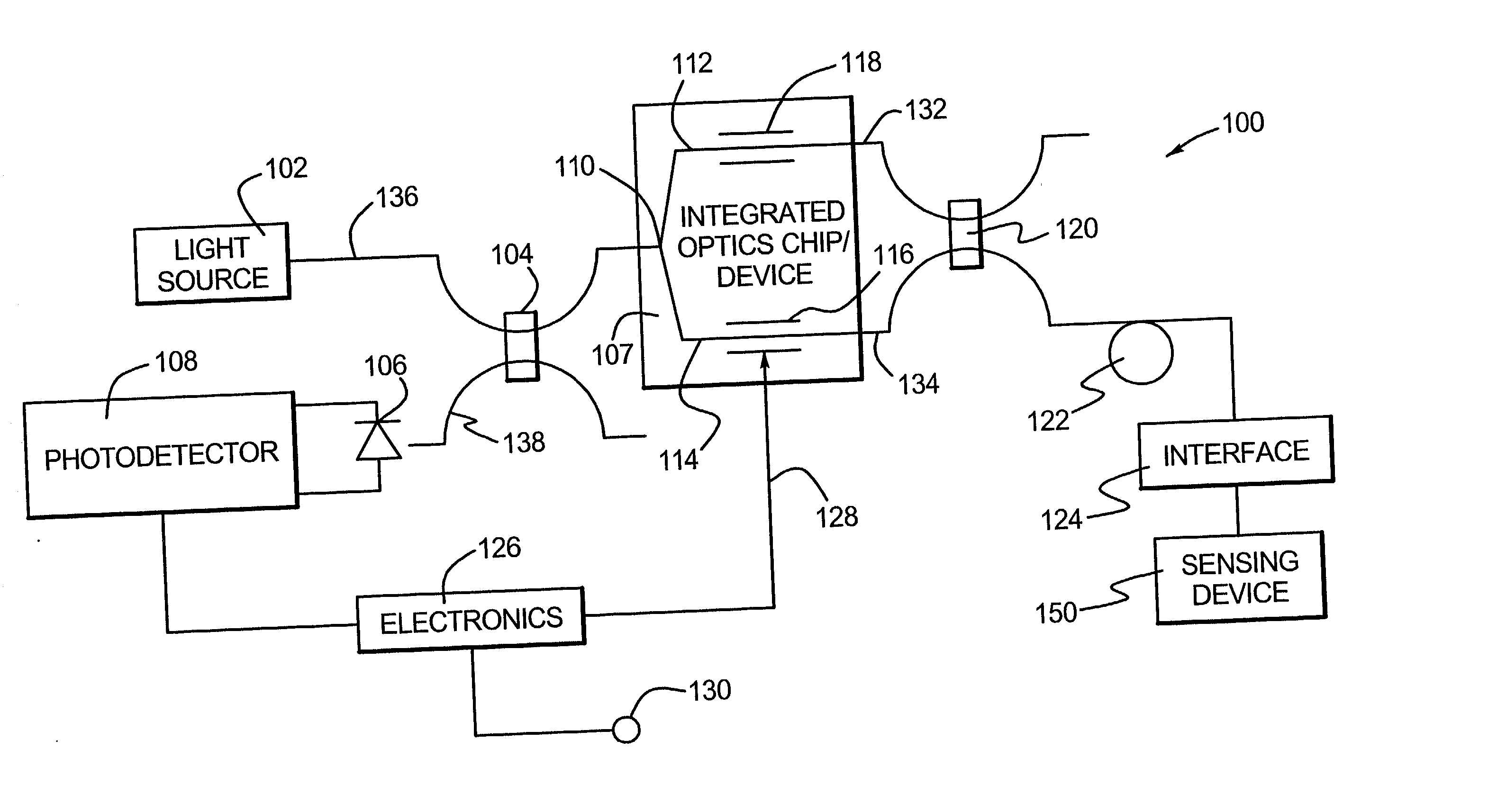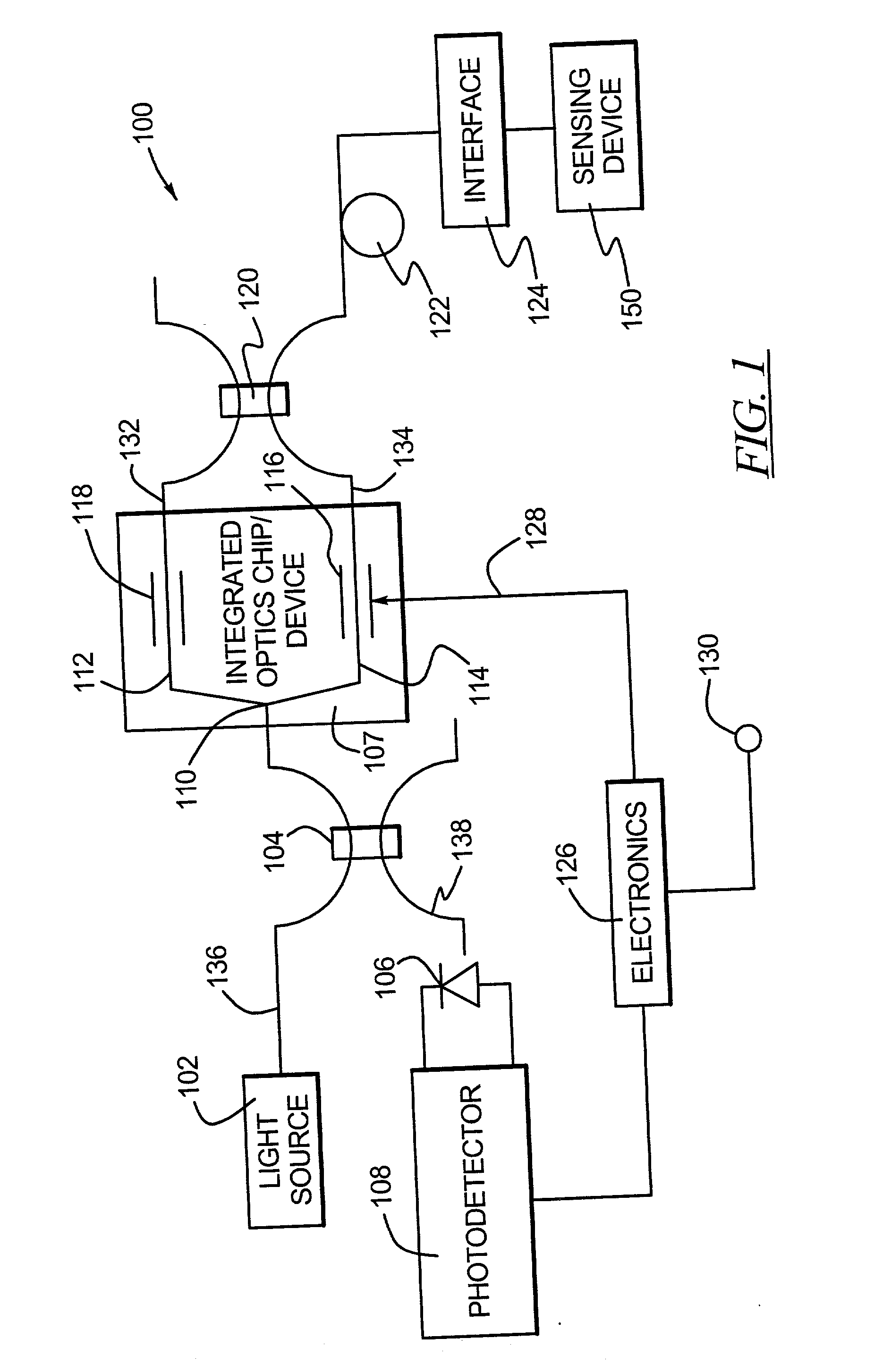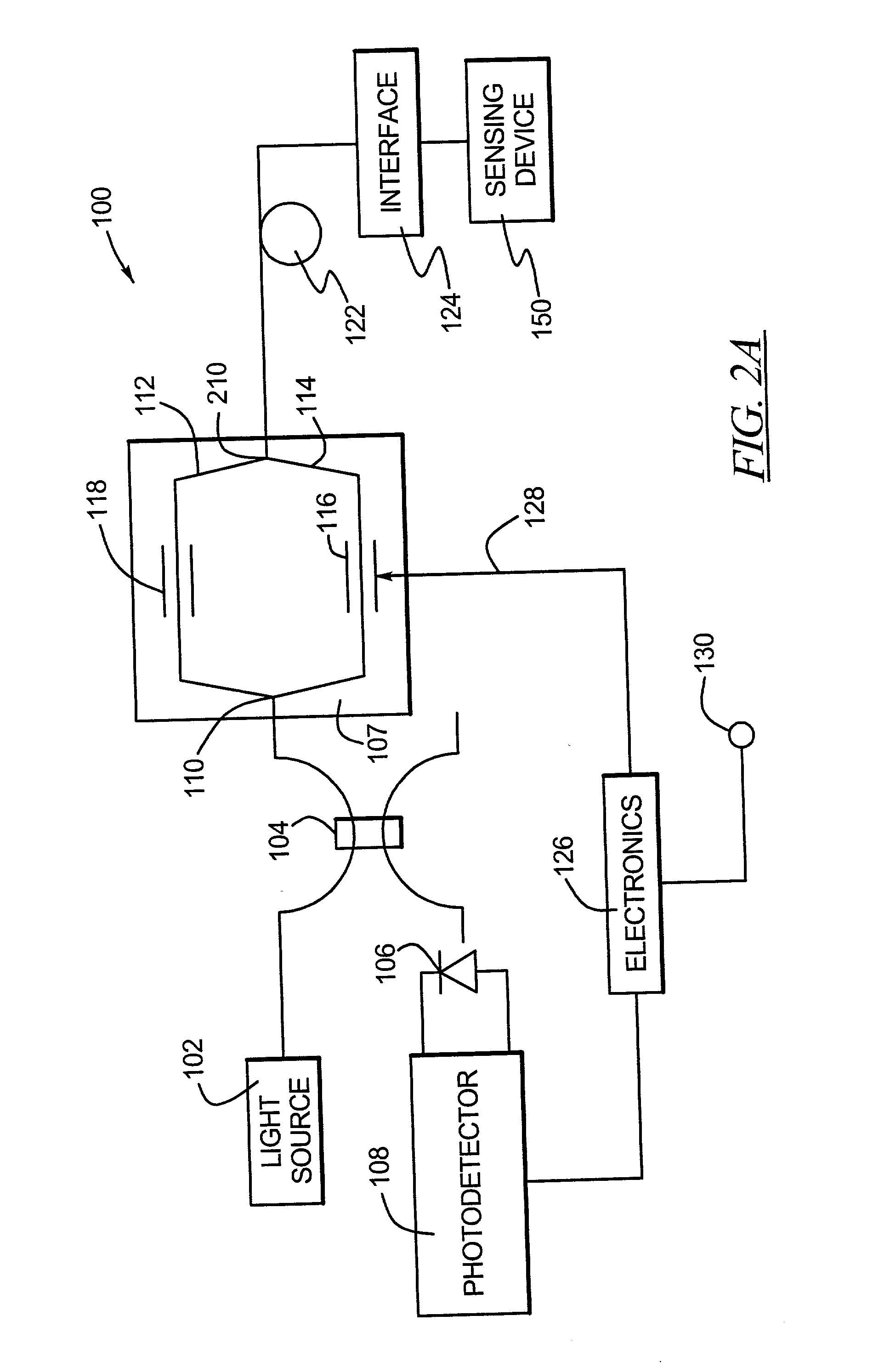Fiber optic sensor
a fiber optic sensor and fiber optic technology, applied in the field of optical sensors, can solve the problems of difficult manufacture, high cost, and measurement of light wavelengths, and achieve the effect of improving the accuracy of measurement results
- Summary
- Abstract
- Description
- Claims
- Application Information
AI Technical Summary
Benefits of technology
Problems solved by technology
Method used
Image
Examples
Embodiment Construction
[0009] According to various exemplary embodiments, a technique for sensing an environmental effect upon a sensing element suitably includes exposing the sensing element into the environmental effect, producing a light signal in the sensing element, modulating the light signal with a modulation "drive" signal, and determining a path length of the light signal from the resulting modulated signal on a sensing optical detector, as a function of the modulation drive signal. According to further exemplary embodiments, a fiber optic sensor suitably includes a light source producing a light, a sensing element optically coupled to the light source such that the light propagates through the sensing element, a detector optically coupled to the sensing element. The detector is configured to detect the intensity of the light propagating in the sensing element and to produce a detector output indicative of the intensity; and the electronics receive the detector output and produce a modulation sig...
PUM
 Login to View More
Login to View More Abstract
Description
Claims
Application Information
 Login to View More
Login to View More - R&D
- Intellectual Property
- Life Sciences
- Materials
- Tech Scout
- Unparalleled Data Quality
- Higher Quality Content
- 60% Fewer Hallucinations
Browse by: Latest US Patents, China's latest patents, Technical Efficacy Thesaurus, Application Domain, Technology Topic, Popular Technical Reports.
© 2025 PatSnap. All rights reserved.Legal|Privacy policy|Modern Slavery Act Transparency Statement|Sitemap|About US| Contact US: help@patsnap.com



